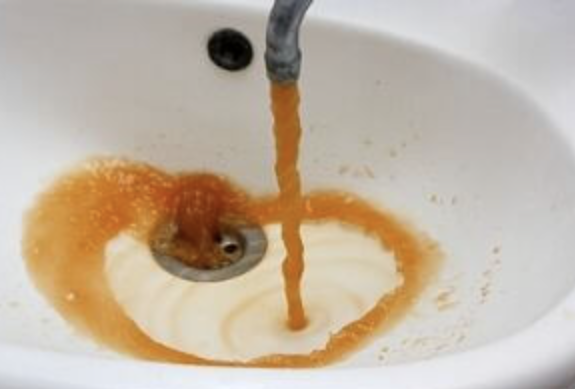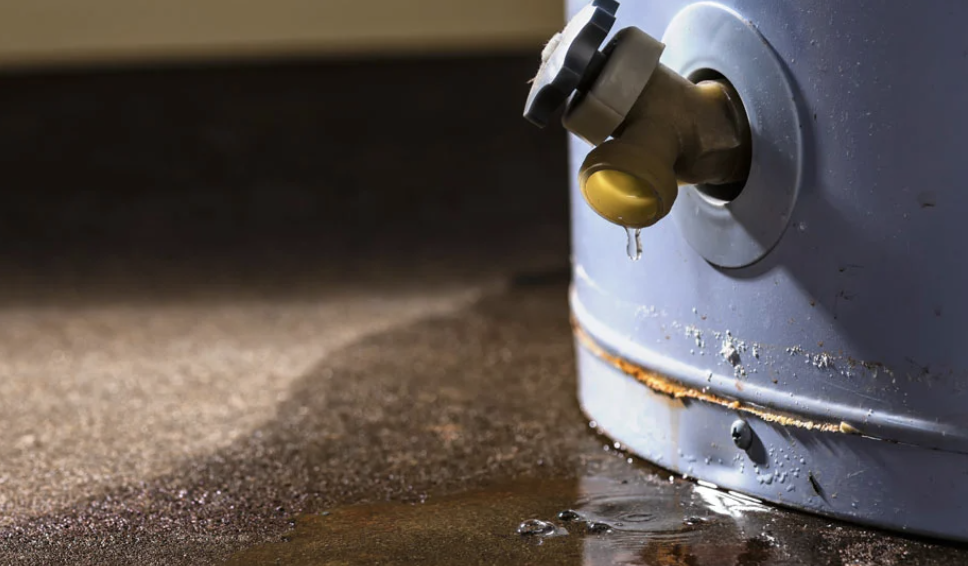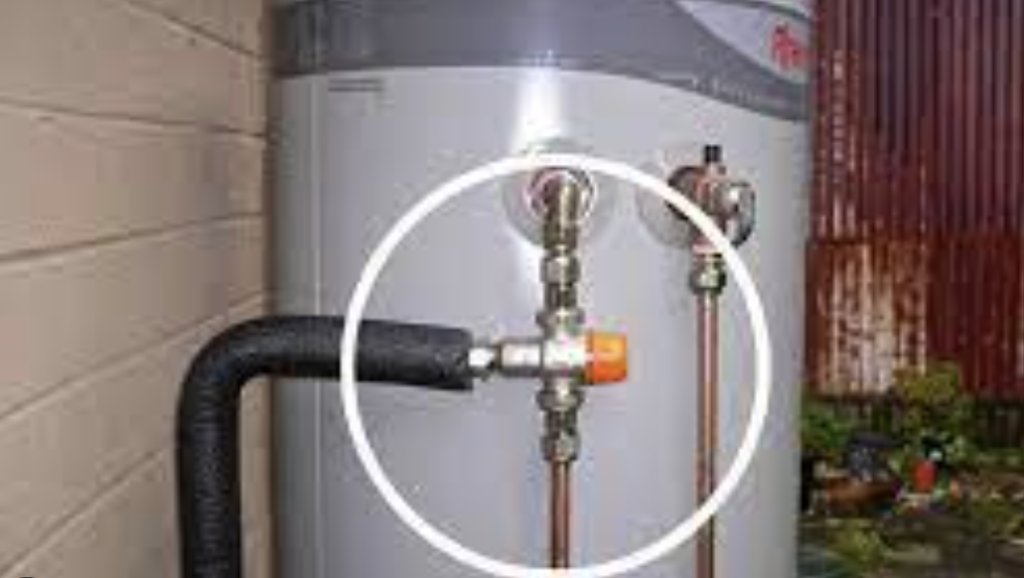Troubleshooting Guide: Gas Water Heater Issues.
One of the essential appliances in any household is the water heater, as it is responsible for heating the water used throughout the home. Gas Water Heater not Working is a common problem for homeowners.
When a water heater malfunctions, it can disrupt daily activities such as showering, dishwashing, and laundry. Gas water heaters operate by burning natural gas to generate the heat required to warm the water stored in the tank.
At a glance: Gas Water Heater not Working due to Dirty, Rusty, or Discoloured Water,Foul Water Odours,Leaking Tank,Pilot Light Trouble or Faulty Valves.
It’s crucial to handle any issues with these heaters with caution, as they can rapidly heat the water to scalding temperatures.
This article explores common reasons why a gas water heater may not be functioning correctly, offering guidance on resolving both current and potential issues.
Related post>>>>Home heater not working.
Why Gas Water Heater not Working and their respective Fixes.
1.Dirty, Rusty, or Discolored Water.

The condition of the hot water emanating from your water heater serves as a valuable indicator of potential issues.
When you observe rusty water, it is typically associated with either a corroded anode rod or a corroded tank. Ideally, if only the anode rod is corroded, a professional plumber can replace it to effectively address the problem.
However, if the tank itself is corroded to the extent that rust becomes visible in the water, it is high time to consider replacing the entire tank.
For dirty or discolored water that lacks a reddish, rusty tint, the underlying problem often lies in the accumulation of scale, primarily caused by heavy mineral deposits like magnesium and calcium.
To tackle this issue, you can take the following steps to troubleshoot and rectify the problem:
- Shut Off the Water Heater: Before you start, turn off the gas supply or electricity to the water heater and allow it to cool down.
- Flush the Tank: Connect a hose to the drain valve at the base of the water heater. Ensure the other end of the hose is positioned safely, such as in a floor drain or outside. Open the drain valve and allow the water to flow out of the tank. This process will help remove sediment and scale build-up.
- Inspect and Clean the Anode Rod: If you haven’t already, check the condition of the anode rod. If it’s corroded, replacing it is advisable. If it’s still in good shape, consider cleaning it and reinstalling it.
- Refill and Restart: Once the tank is thoroughly flushed, close the drain valve, disconnect the hose, and turn the water supply back on. Allow the tank to fill up completely before restoring power or gas supply to the water heater.
- Monitor Water Quality: After following these steps, monitor the quality of the hot water. If it becomes clear and free from discoloration, the issue was likely due to sediment and scale build-up. However, if the problem persists, it may be a sign of a more significant problem with the tank itself.
If you find that the water remains discoloured or rusty after flushing and inspecting the anode rod, it’s recommended to consult a professional plumber or water heater technician for a thorough assessment and potential tank replacement.
Additionally, if you frequently encounter water quality issues, investing in a whole-home water softener system can be a long-term solution to prevent scale build-up in your water heater.
2.Foul Water Odours.
Apart from the appearance of the water, the presence of unusual odors is another key indicator of a potential issue with your water heater.
If you detect a strong, unpleasant odor coming from your hot water, it likely signifies a problem with the water heater. Here are two common foul water odors and their respective solutions:
Sewage Odor: If you notice a sewage-like smell in your hot water, it indicates the presence of bacteria growing inside the water tank. This means that every time you use hot water in your home, it’s already contaminated.
To address this issue, follow these steps (Fixes)
- Turn off the gas supply or electricity to the water heater and allow it to cool down.
- Connect a hose to the drain valve at the base of the water heater and position the other end in a safe drainage location.
- Open the drain valve and thoroughly flush the water tank. This should help eliminate the bacteria and the foul odor.
- Consider having the anode rod replaced, as this can help reduce corrosion and prevent the growth of anaerobic bacteria.
Sulfur Odour.
A slight sulfuric scent often indicates that the pilot light on your water heater has gone out, and it needs to be relit. However, a strong sulfur smell may suggest a problem with the gas line.
If you encounter a strong sulfur odor, follow these steps: (Fixes)
- Turn off the gas water heater immediately.
- Safely ventilate the area by opening windows and doors to dissipate any gas fumes.
- Do not use any open flames, electrical switches, or appliances, as there may be a gas leak.
- Contact both a professional plumber and your gas utility company to address the issue. It’s advisable to leave the area until the gas leak is repaired.
By following these steps, you can troubleshoot and resolve foul water odors associated with your gas water heater.
If you experience persistent issues or are unsure about handling gas-related problems, it’s essential to seek professional assistance to ensure safety and proper resolution.
Also read>>>Home Central Heater Not Working.
3.Leaking Tank.

If you hear regular sizzling sounds coming from your water heater, it’s often an indication of internal condensation, which may suggest a leak in the tank.
Dealing with a leaking water heater can be a challenging problem, and the resolution depends on the location of the leak.
Here are the steps to troubleshoot and address this issue:
1. Identify the Leak Location:
- Determine whether the leak is originating from the top or bottom of the tank.
2. Leaks from the Top of the Tank:
- Leaks from the top of the tank are typically caused by loose or defective valves.
- If you have plumbing experience, you can attempt the following:
- Tighten the valve using a pair of channel locks to ensure a secure connection.
- Replace the valve if it is damaged beyond repair.
- Repair the connection between the valve and the tank by adding plumber’s dope or plumber’s tape to improve the seal.
3. Leaks from the Bottom of the Tank:
- If the leak is coming from the bottom of the tank, it’s likely a sign that the tank has corroded over time and needs replacement.
- Contact a professional plumber to inspect the leak and determine the necessary steps to repair or replace the water heater.
In cases of a leaking tank, it’s crucial to act promptly. Delaying repairs or replacement can lead to further damage, water wastage, and potential safety hazards.
Consulting a professional plumber is often the best course of action, especially if the leak is from the bottom of the tank, as this typically indicates significant corrosion and the need for a new water heater.
4.Pilot Light Trouble.
Gas water heaters rely on a pilot light as the ignition source for their main gas burner and may lead into Gas Water Heater not Working. This pilot light ignites when the water temperature in the heater drops below the thermostat’s set level.
The ignited pilot light then allows natural gas to flow through the gas regulator valve, lighting the main burner to heat the water inside the tank.
If there is an issue with the pilot light, the water heater cannot function correctly. Here’s how to troubleshoot and address pilot light problems:
1. Pilot Light Won’t Ignite:
- The pilot light orifice or tube can become clogged or worn over time, preventing proper ignition. In such cases, you may need to replace the pilot light assembly.
2. Pilot Light Frequently Goes Out:
- If the pilot light keeps going out, it could be due to a faulty or loose thermocouple. The thermocouple is a safety device that detects the pilot light’s presence and ensures the gas valve remains open. If it’s not functioning correctly, the pilot light may extinguish. Replacing a malfunctioning thermocouple can often resolve this issue.
3. Air in the Gas Line:
- Air in the gas line can disrupt the pilot light’s operation. If you suspect air in the line, you can attempt to bleed it by turning off the gas supply, waiting for a few minutes, and then reigniting the pilot light according to the manufacturer’s instructions.
4. Defective Gas Valve:
- If the pilot light issue persists despite checking the above components, the problem may be with a defective gas valve. The gas valve controls the flow of gas to the pilot light and main burner. A professional plumber or water heater technician should inspect and, if necessary, replace the gas valve.
5.Faulty Valves.

Water heaters, like many water-based appliances, are equipped with various valves for safety and functionality.
It’s essential to regularly inspect these valves for any issues, as they can be prone to leaks.
Here’s a breakdown of the valves commonly found in water heaters and how to address problems associated with them:
1. Temperature and Pressure Relief Valve:
- The temperature and pressure relief valve is designed to open and release steam and water if the pressure inside the tank becomes too high. This safety feature prevents the tank from rupturing or damaging the valves. If you observe the relief valve hissing or spraying water, it’s a sign that something is amiss.
- In such a situation, follow these steps:
- Immediately turn off the gas and water supply to the water heater.
- Contact a plumber to inspect the water heater and perform any necessary repairs or valve replacements.
2. Tank Drain Valve:
- The tank drain valve, usually located at the base of the water heater, is used for draining the tank, performing maintenance, or replacing the tank. If this valve is leaking or not functioning correctly, it may require replacement.
3. Inlet and Outlet Valves:
- Inlet and outlet valves are located at the top of the water heater and control the flow of water into and out of the tank. Leakage from these valves may occur, and they should be inspected regularly.
- DIYers with plumbing experience can replace or repair these valves if necessary.
If you are experienced with plumbing and feel confident in your abilities, you can attempt to replace or repair faulty valves on your water heater.
However, if you are uncertain about the process or your safety, it’s strongly recommended to contact a professional plumber.
They can accurately assess the condition of the valves, make any necessary repairs, and ensure that the work is carried out safely, reducing the risk of leaks and potential damage to your water heater.
Also read>>>>Heater Smells Like Burning.
Frequently Asked Questions (FAQs).
Why is my gas water heater producing discoloured or foul-smelling water?
Answer: Discolored water often indicates sediment and scale build-up caused by heavy minerals like magnesium and calcium. Flushing the water heater can help resolve this issue.
Foul odors, on the other hand, may be due to bacteria growth in the tank, which can be addressed by thoroughly flushing the tank and, if necessary, replacing the anode rod to reduce corrosion.This issue is also associated with the reason why Gas Water Heater not Working.
My water heater’s pilot light won’t stay lit. What should I do?
Answer: If the pilot light keeps going out, it could be due to a faulty or loose thermocouple. Replace the thermocouple to ensure the pilot light stays lit. Also, check for air in the gas line and bleed it if needed. If the problem persists, consider consulting a professional plumber or water heater technician.
How can I fix a leaking water heater tank?
Answer: If you notice a leak at the top of the tank, it’s likely due to loose or defective valves. You can tighten or replace the valve or repair the connection using plumber’s dope or plumber’s tape.
However, if the leak is from the bottom of the tank, it indicates significant corrosion and the need for tank replacement. Contact a professional plumber for a thorough inspection and appropriate action.Remember this issue is also associated with Gas Water Heater not Working.
What should I do if my water heater’s relief valve is hissing or spraying water?
Answer: The relief valve is a safety feature that releases steam and water if the tank’s pressure becomes too high.
If you observe this, immediately turn off the gas and water supply to the water heater. Contact a plumber to inspect the water heater and carry out necessary repairs or replacement of the relief valve. It’s crucial to address this issue promptly for safety reasons.
Conclusion.
Maintaining a gas water heater’s functionality and safety requires vigilance and periodic inspections. Gas Water Heater not Working can be caused by discolored water, foul odors, pilot light problems, and faulty valves can disrupt its operation.
However, with proper troubleshooting and maintenance, many of these problems can be addressed effectively. DIY enthusiasts with plumbing experience can handle some of these issues, but safety should always be a priority.
For complex problems or if you’re uncertain about the fix, it’s wise to seek the expertise of a professional plumber or water heater technician.
Regular care and timely action can ensure your gas water heater continues to provide reliable hot water for your home.

